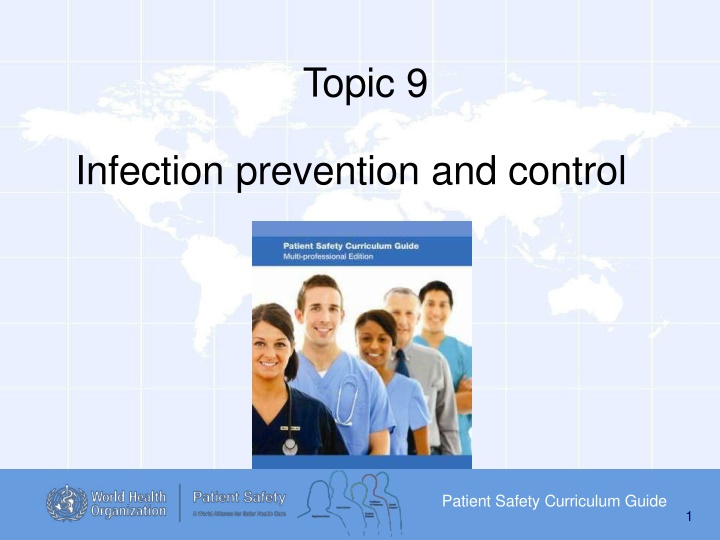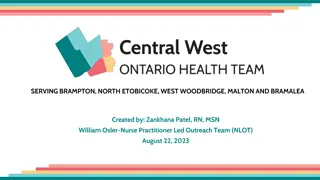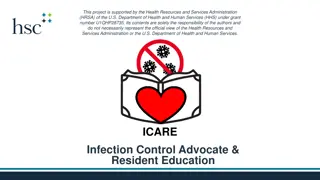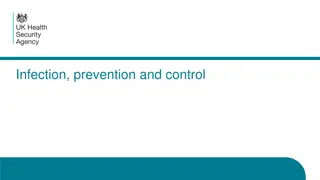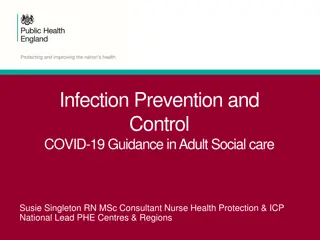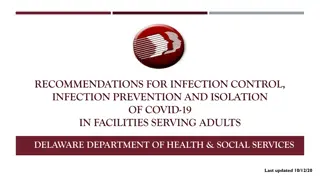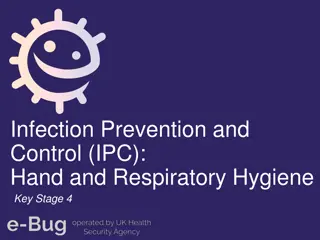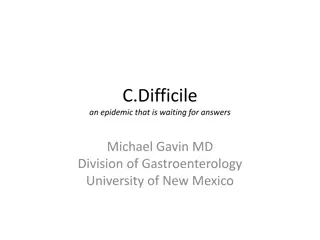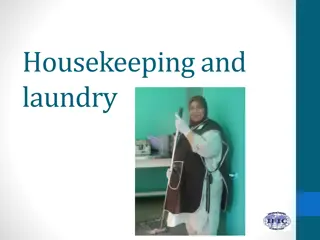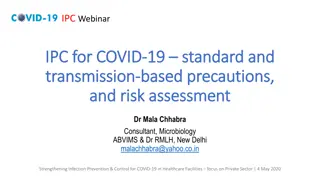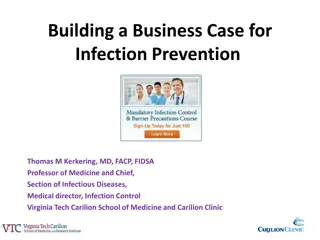Comprehensive Guide to Infection Prevention and Control in Health Care Settings
This curriculum guide focuses on educating healthcare professionals on the devastating effects of inadequate infection prevention and control. It covers learning objectives, knowledge requirements, performance expectations, urgency of the issue, and global responses to reduce infection rates. Topics range from understanding the main causes and types of healthcare-associated infections to implementing standard precautions and educating community members. The guide emphasizes the critical role each healthcare team member plays in minimizing contamination risks and enhancing patient safety.
Download Presentation

Please find below an Image/Link to download the presentation.
The content on the website is provided AS IS for your information and personal use only. It may not be sold, licensed, or shared on other websites without obtaining consent from the author.If you encounter any issues during the download, it is possible that the publisher has removed the file from their server.
You are allowed to download the files provided on this website for personal or commercial use, subject to the condition that they are used lawfully. All files are the property of their respective owners.
The content on the website is provided AS IS for your information and personal use only. It may not be sold, licensed, or shared on other websites without obtaining consent from the author.
E N D
Presentation Transcript
Topic 9 Infection prevention and control Patient Safety Curriculum Guide 1
Learning objectives Demonstrate the devastating effects of inadequate infection prevention & control in health-care settings Show students how they as individual members of the health-care team can help minimize the risks of contamination & infection to improve patient safety Patient Safety Curriculum Guide 2
Knowledge requirements The extent of the problem The main causes and types of HCAI The modes of infection transmission in health-care settings The main principles and methods for HCAI prevention and control Patient Safety Curriculum Guide 3
Performance requirements (1) Apply standard precautions Adhere to other infection prevention and control measures as required Apply principles of asepsis Use and dispose of protective clothing and equipment appropriately Know what to do if exposed to blood or other bodily fluids Act as a role model for other health-care staff Be immunized against hepatitis B Use and dispose of sharps properly Patient Safety Curriculum Guide 4
Performance requirements (2) Educate community members as to how they can help to prevent infections Encourage others to use standard precautions to prevent and control HCAI Understand the potential social, economic and emotional burden of HCAI on patients, and act accordingly Be able to discuss HCAI with patients and relatives with sensitivity and clarity Patient Safety Curriculum Guide 5
What is the urgency? Can no longer rely on antibiotics Increased rates of nosocomial infections Infected patients: Stay longer in hospital Die Are treated with more toxic and less effective drugs Are prone to surgical site infections Patient Safety Curriculum Guide 6
Global response: campaigns to decrease infection rates WHO SAVE LIVES: Clean Your Hands campaign Centers for Disease Control and Prevention campaign to prevent antimicrobial resistance in health-care settings Institute for Healthcare Improvement 5 million lives campaign Patient Safety Curriculum Guide 7
Main causes of infection Person-to-person via hands of health-care providers, patients and visitors Personal equipment (e.g. stethoscopes, personal digital assistants) and clothing Airborne transmission Rare common-source outbreaks Environmental contamination Device contamination ( e.g. catheters) Hospital staff carriers Patient Safety Curriculum Guide 8
Main types of infections Urinary tract infections usually associated with catheters Surgical infections Blood stream infections associated with the use of an intravascular device Pneumonia associated with ventilators Other sites Patient Safety Curriculum Guide 9
Main types of infections Source: Burke J Infection control-a problem for patient safety New Eng Journal of Medicine Patient Safety Curriculum Guide 10
Environmental cleanliness The environment: Visibly clean Increased cleaning during outbreaks Use hypochlorite and detergents during outbreaks Patient Safety Curriculum Guide 11
Hand hygiene to minimize spread of infection WHO 's ' My 5 Moments for Hand Hygiene': Before Touching a Patient Before Clean/Aseptic Procedure After Body Fluid Exposure Risk After Touching a Patient 5. After Touching Patient Surroundings 1. 2. 3. 4. Source:http://www.who.int/gpsc/5may/background/ 5moments/en/index.html Patient Safety Curriculum Guide 12
Personal protective equipment Gloves Gowns Face masks Patient Safety Curriculum Guide 13
Safe disposal of sharps Keep handling to a minimum Do not recap, bend or break needles after use Discard each needle into a sharps' container at the point of use Do not overload a bin if it is full Do not leave a sharps' bin in the reach of children Patient Safety Curriculum Guide 14
What students need to do Apply standard precautions Be immunized against Hepatitis B Use personal protection methods Know what to do if exposed Encourage others to use standard precautions Patient Safety Curriculum Guide 15
Encourage others to participate in infection control Students may routinely observe staff who: Fail to comply with hand hygiene practices Fail to practice infection prevention and control recommendations Patient Safety Curriculum Guide 16
Summary Know the main guidelines in each of the clinical environments in which you are working Accept responsibility for minimizing opportunities for infection transmission Let staff know if supplies are inadequate or depleted Educate patients and families/visitors about clean hands and infection transmission Ensure patients on precautions have same standard of care as others: Frequency of entering the room Monitoring vital signs Patient Safety Curriculum Guide 17
